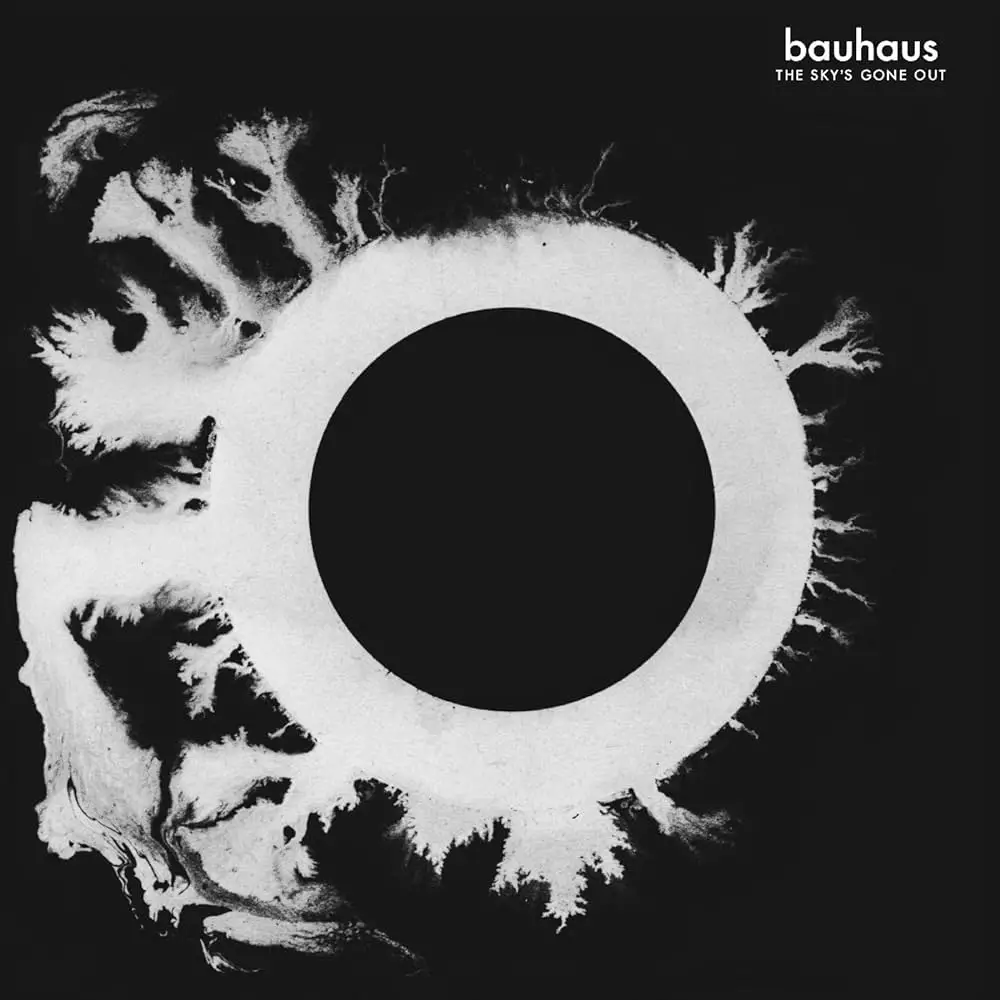Unveiling the enigmatic masterpiece that is “The Sky’s Gone Out” by Bauhaus. Discover the history, track listing, significant reviews, key themes, version/release history, and a list of similar albums.
Bauhaus, the iconic post-punk band hailing from Northampton, England, is known for its avant-garde and influential sound that left an indelible mark on the music industry. In their illustrious career, they released several groundbreaking albums, but one that stands out as a pivotal moment in their discography is “The Sky’s Gone Out.” This album, which was released in 1982, is a sonic journey that defies easy categorization, and in this article, we will delve deep into its history, track listing, significant reviews, key themes, version/release history, and provide a list of similar albums that music enthusiasts might enjoy.
A Glimpse into Bauhaus’ History and Development
To truly appreciate “The Sky’s Gone Out,” we need to step back in time and understand the context in which it was created. Bauhaus, formed in 1978, consisted of Peter Murphy (vocals), Daniel Ash (guitar), David J (bass), and Kevin Haskins (drums). The band emerged from the punk and glam rock scene, but they quickly carved out their unique niche with a fusion of post-punk, gothic, and art rock influences.

Their early albums, such as “In the Flat Field” (1980) and “Mask” (1981), garnered critical acclaim and a dedicated fanbase. Bauhaus was known for their theatrical live performances and a distinctive image that often embraced the dark and mysterious.
“The Sky’s Gone Out” marked the band’s third studio album and came at a pivotal moment in their career. It showcased their evolution as musicians and their willingness to experiment with their sound.
The Track Listing:
Let’s now take a closer look at the track listing of “The Sky’s Gone Out.” This album consists of ten tracks, each contributing to the overall atmospheric and enigmatic experience:
- Third Uncle: The album kicks off with a bang, featuring a cover of Brian Eno’s “Third Uncle.” It sets the tone with its driving rhythm and Daniel Ash’s distorted guitar work.
- Silent Hedges: “Silent Hedges” is a hypnotic track with Peter Murphy’s distinctive baritone vocals and surreal lyrics. It delves into themes of isolation and introspection.
- In the Night: This song carries a sense of urgency and features David J’s pulsating bassline. It’s a testament to Bauhaus’ ability to create an eerie atmosphere.
- Swing the Heartache: A live recording of this track showcases the band’s raw energy during their performances. It’s a fan-favorite that captures the essence of their live shows.
- Spirit: “Spirit” is a hauntingly beautiful track, showcasing Peter Murphy’s vocal range. It explores themes of spirituality and transcendence.
- The Three Shadows (Part 1): This instrumental piece serves as an interlude, creating an eerie ambiance that ties the album’s themes together.
- The Three Shadows (Part 2): Continuing from the previous track, this piece maintains the sense of foreboding, building tension as the album progresses.
- The Three Shadows (Part 3): The final part of this trilogy brings a sense of resolution, concluding the thematic journey that runs through the album.
- All We Ever Wanted Was Everything: A powerful track with introspective lyrics, it reflects on desires and the search for meaning in life.
- Exquisite Corpse: The album closes with “Exquisite Corpse,” an experimental track with distorted vocals and disjointed instrumentation, leaving listeners with a sense of intrigue.
Significant Reviews: Critical Acclaim
“The Sky’s Gone Out” received mixed reviews upon its release, which is not uncommon for albums that push the boundaries of genre. Critics appreciated the band’s willingness to experiment but found the album to be less accessible than its predecessors.

Rolling Stone‘s Parke Puterbaugh noted, “Bauhaus now seems more of a moody art-rock ensemble than the cutting-edge post-punk band they used to be.” While some critics questioned the album’s coherence, others celebrated its avant-garde nature.
Over time, the album has gained recognition as a significant and influential work within the post-punk and gothic genres. Its unconventional structure and exploratory approach have earned it a place in music history.
Key Themes: Darkness, Transformation, and the Unknown
To truly appreciate “The Sky’s Gone Out,” it’s essential to delve into its key themes. The album explores the following themes in a haunting and enigmatic manner:
- Darkness: Darkness is a recurring motif throughout the album, both lyrically and musically. It’s a reflection of the band’s fascination with the mysterious and uncharted territories of the human psyche.
- Transformation: The album invites listeners to embrace change and transformation. The band challenges the status quo, urging us to evolve and adapt.
- The Unknown: “The Sky’s Gone Out” delves into the unknown, exploring uncharted territories of sound and emotion. It’s an artistic voyage into unexplored realms.
Version/Release History: Unraveling the Editions
Bauhaus – Dark Entries (Live in London 24-02-1982) HD from Old School Legacy – Remo on Vimeo.
Bauhaus’ “The Sky’s Gone Out” has seen several releases and reissues over the years, each with its unique elements. Here’s a brief overview of some notable editions:
- Original Vinyl Release (1982): The album was first released on vinyl, featuring the iconic cover art designed by guitarist Daniel Ash. This edition is a collector’s item for avid fans.
- CD Release (1988): The CD release brought the album to a new audience and included bonus tracks not found on the original vinyl, such as “Crowds” and “Terror Couple Kill Colonel.”
- Remastered Edition (2008): In 2008, “The Sky’s Gone Out” received a remastered release, enhancing the audio quality and bringing the album’s sonic intricacies to the forefront.
- Limited Edition Vinyl Reissues: Various limited edition vinyl reissues have been released, often featuring colored vinyl and exclusive packaging.
- Streaming and Digital Versions: The album is now readily available on streaming platforms, ensuring that new generations can discover its unique sound.
Albums with Similar Vibes: A Playlist for Enthusiasts
If you’re a fan of “The Sky’s Gone Out” and are looking to explore more music with a similar atmosphere and sonic texture, here are some albums that you might find intriguing:
- Joy Division – “Unknown Pleasures” (1979): Joy Division’s debut album is a post-punk masterpiece known for its haunting melodies and Ian Curtis’s emotive vocals.
- The Cure – “Disintegration” (1989): A gothic rock classic, “Disintegration” is filled with atmospheric tracks that explore themes of love, loss, and introspection.
- Siouxsie and the Banshees – “Juju” (1981): Siouxsie and the Banshees’ album “Juju” is a gothic rock gem with hypnotic rhythms and Siouxsie Sioux’s captivating vocals.
- The Sisters of Mercy – “Floodland” (1987): Known for their dark and brooding sound, The Sisters of Mercy’s “Floodland” is a quintessential gothic rock album.
- Echo & the Bunnymen – “Ocean Rain” (1984): This album combines post-punk and dream-pop elements, creating a lush and cinematic sound.
The Sky’s Gone Out
As we’ve delved into the history, track listing, significant reviews, key themes, version/release history, and a list of similar albums related to “The Sky’s Gone Out” by Bauhaus, it’s clear that this album is a pivotal moment in music history. It challenges conventions, explores the depths of human experience, and continues to captivate listeners with its enigmatic charm. Whether you’re a die-hard fan or a newcomer to Bauhaus, “The Sky’s Gone Out” remains an essential and evocative piece of art worth exploring.





